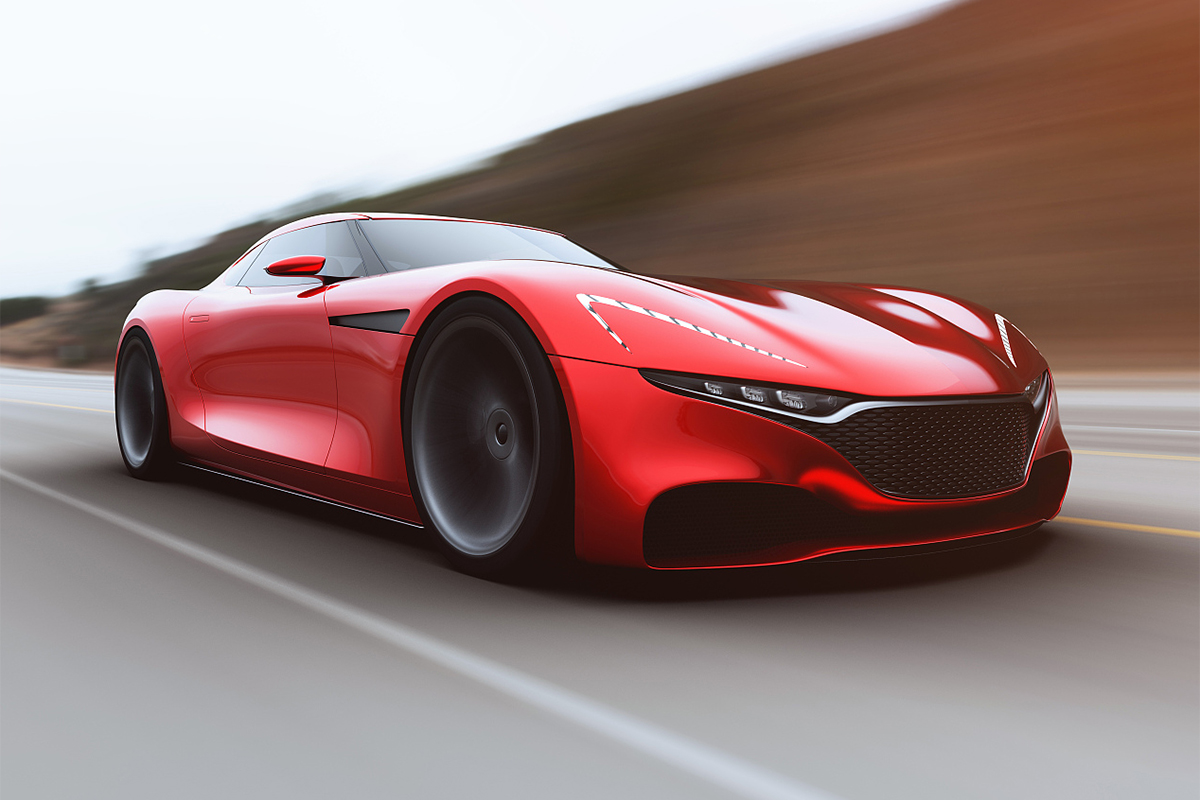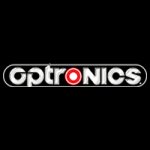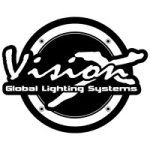
Vehicle lighting is an essential and integral part of automotive design and functionality, serving various purposes to ensure safety, visibility, and communication on the road. The primary objective of vehicle lighting is to enhance the visibility of the vehicle, both for the driver and other road users. This is particularly crucial during low-light conditions, such as night driving or adverse weather. Vehicle lights are critical for signaling the driver's intentions and actions to other road users. Turn signals indicate upcoming maneuvers, brake lights signal deceleration, and hazard lights alert others to potential dangers or emergencies. Lighting systems, such as turn signals and brake lights, facilitate communication between drivers. Turn signals indicate a driver's intention to change lanes or make a turn, while brake lights signal a decrease in speed or a stop. Clear communication through lighting helps prevent accidents and ensures smooth traffic flow. Vehicle lighting is carefully integrated into the overall design of the vehicle to enhance its aesthetics. Stylish and well-designed lighting elements contribute to the vehicle's visual appeal, creating a cohesive and attractive exterior. Some vehicles incorporate distinctive lighting signatures as part of their branding. Recognizable lighting patterns, such as signature LED
daytime running lights, contribute to brand identity and make certain vehicles easily recognizable on the road. Vehicle lighting systems adhere to stringent regulatory standards and local laws governing the specifications for colors, brightness, and placement of lights. Compliance ensures uniform safety measures across different vehicles.
The multifaceted system
Vehicle lighting is a multifaceted system that encompasses various types of lights that are strategically integrated into vehicles to fulfill diverse purposes. Vehicle exterior lighting serves multiple purposes related to illumination, signaling, and safety. The primary purpose of vehicle exterior lighting is to provide illumination for external visibility. Headlights, taillights, and
side marker lights ensure that the vehicle is visible to other road users and pedestrians, especially during low-light conditions such as nighttime. Exterior lights are crucial for signaling the intentions and actions of the driver to other road users. Turn signals, brake lights, and hazard lights communicate important information to surrounding drivers, enhancing overall road safety. Vehicle interior lighting serves the purpose of illuminating the interior space of the vehicle, enhancing visibility for occupants. The primary purpose of vehicle interior lighting is to provide sufficient illumination within the cabin. This ensures that occupants can easily see and navigate the interior space, particularly during low-light conditions such as nighttime. Whether for practical tasks, reading, or creating a comfortable atmosphere,
vehicle interior lights contribute to the overall functionality and safety of the vehicle's interior space. Vehicle emergency and hazard lighting serve the crucial purpose of signaling urgency, warning of hazards, and ensuring visibility in emergency situations. Whether used by law enforcement, emergency services, or private vehicles, these lights contribute to overall road safety and effective response to urgent situations. Vehicle auxiliary lights serve the purpose of providing additional illumination for specific applications, customization, or enhanced visibility. Whether for off-road adventures, work-related tasks, or personalization, auxiliary lights contribute to improved visibility and the overall functionality of the vehicle. Vehicle adaptive and advanced lighting systems that incorporate intelligent features to enhance visibility, safety, and overall driving experience. These systems contribute to improved visibility, safety, and comfort for both the driver and other road users, making driving more efficient and secure, especially in diverse and challenging environments. Weather-adaptive lighting refers to vehicle lighting systems that are designed to dynamically adapt to various weather conditions. These advanced lighting systems use sensors and intelligent technology to adjust the illumination patterns, intensity, or other parameters of the lights based on the current weather conditions.
Solid
stage lighting has had a profound impact on vehicle lighting, leading to innovations that improve energy efficiency, safety, customization, and overall driving experience. The adoption of LED technology has transformed various aspects of vehicle lighting systems, including headlights, taillights, interior lighting, and auxiliary lighting. The high efficiency of
LED lights not only leads to lower power consumption and extended battery life but also contributes to enhanced overall reliability and compliance with energy efficiency standards in the automotive industry. The solid-state nature of LEDs and their resistance to vibrations and shocks contribute to increased durability. The longevity of LED lights means that vehicle owners experience fewer replacements, reducing maintenance costs and enhancing reliability. LEDs are compact and allow for greater design flexibility in vehicle lighting. LEDs can be arranged in various configurations, allowing for creative styling and improved aesthetics in both exterior and interior vehicle lighting. The focused and intense light output of LEDs enhances illumination, allowing drivers to see farther and be seen by other road users. This is particularly beneficial for headlights and auxiliary lighting applications. LED lights can produce light in a specific
color temperature or color suitable for vehicle lighting applications by manipulating the spectral power distribution (SPD). This flexibility in adjusting the SPD allows for customization to meet the aesthetic and functional requirements of automotive lighting systems. The ability of LED lights to produce a full spectrum of colors through
RGB and multi-channel color mixing systems, coupled with dynamic lighting effects, represents a significant advantage in automotive lighting applications.
OLED and laser lighting are solid-state lighting technologies that are making their presence felt in vehicle lighting applications.
OLED light panels are thin and flexible, allowing for innovative designs and applications. In vehicle lighting, OLED light panels can be used for various purposes, including rear lighting, interior lighting, and display panels. They offer the advantage of producing diffuse, uniform light and can be integrated into curved surfaces. OLEDs are used to create innovative lighting designs that enhance both the aesthetics and functionality of vehicles. Laser lighting technology is known for longer-range visibility compared to traditional lighting systems. Laser lighting utilizes
laser diodes to generate light. In automotive applications, laser lighting is often used for its high intensity and focused beam characteristics. Laser headlights can provide a higher luminance, allowing for longer-range illumination. They may also be used for adaptive lighting systems that adjust the beam pattern based on driving conditions. The inclusion of OLED and laser lighting signifies a continued evolution in automotive lighting technologies. As vehicle manufacturers strive to improve efficiency, safety, and design aesthetics, they explore and implement new and advanced lighting solutions.
Solid state lighting systems can produce light immediately upon receiving electrical power. In automotive settings, quick response times in lighting are critical for safety and visibility. Immediate illumination upon turning on the headlights is crucial for providing visibility to the driver and others on the road. Instantaneous activation of brake lights enhances the ability of following drivers to react quickly to braking maneuvers. Solid state lighting systems can be rapidly turned on and off without any degradation in performance. This instant response to control signals makes them suitable for applications where quick and precise lighting adjustments are needed. Solid state light sources, especially LEDs, are known for their superior performance when it comes to dimming capabilities. They can typically be dimmed across a wide range of intensity, allowing for precise adjustments to match specific lighting needs or preferences. When facilitated by electronic drivers and control systems that govern the power supplied to individual LEDs, the controllability of LED technology provides designers with a rich palette of options, encouraging experimentation and creativity in vehicle lighting design. Solid state lighting allows for creative exploration in terms of both form and function in the design of automotive lighting systems. Auto manufacturers can engage in experimentation with vehicle lighting, trying out new ideas, configurations, and dynamic lighting effects. The use of LED and OLED technologies enables dynamic lighting effects, such as sequential turn signals, animated welcome lights, or pulsating brake lights.
Vehicle headlights can be designed with adaptive features that adjust the direction and intensity of the light beam based on driving conditions. This adaptive lighting enhances safety and visibility, providing designers with opportunities to optimize lighting performance.
Vehicle headlights is to illuminate the road ahead for the driver. They are positioned to cast light in the direction the vehicle is moving, aiding in visibility during various driving conditions. Headlights are equipped with both low-beam and high-beam settings. These settings offer versatility to the driver based on driving conditions. Low beam provides a focused and downward-directed light to illuminate the road directly ahead without blinding oncoming drivers. High beam emits a more intense and broader beam of light, allowing for increased visibility at a distance. The use of laser high beams in vehicles is on the rise. Laser technology enables the achievement of the desired focus and collimation, which is crucial for applications requiring a concentrated and directed beam of light. Matrix LED headlights represent a technological advancement in automotive lighting. Matrix LED headlights are characterized by having individually controlled segments. Each segment refers to a distinct portion of the headlight that can be controlled independently. The purpose of having individually controlled segments is to achieve precise lighting. The headlights can adapt to specific driving conditions by dynamically adjusting the illumination pattern. Precise lighting allows for optimal visibility without causing glare for oncoming vehicles. Matrix LED headlights can dynamically adapt the lighting pattern based on various factors such as the speed of the vehicle, steering input, and the presence of other vehicles on the road. Individually controlled segments enable selective illumination of specific areas on the road. For example, certain segments can be dimmed to avoid dazzling oncoming drivers, while other segments maintain full brightness to illuminate the sides of the road. Matrix LED headlights are often part of adaptive lighting systems. These systems use sensors and control algorithms to adjust the headlights in real-time, optimizing illumination based on environmental conditions and driving dynamics.
Vehicle taillights are positioned at the rear to serve multiple functions. These functions include brake lights, turn signals, running lights, and sometimes reverse lights. The collective functions of taillights contribute significantly to the rear visibility of the vehicle. The primary purpose of taillights is to enhance the vehicle's visibility from the rear and facilitate communication between the driver and other road users. The illuminated taillights convey important information about the vehicle's actions, intentions, and presence. Brake lights illuminate when the driver applies the brakes, signaling to following drivers that the vehicle is slowing down or stopping. Taillights also function as turn signals. When the driver activates the turn signal, the corresponding taillight blinks to indicate the intended direction of the turn. Turn signals contribute to communicating the driver's intentions to other road users. Taillights often serve as running lights, which are illuminated whenever the vehicle is in motion. Running lights enhance the vehicle's visibility, making it easier for other drivers to detect its presence on the road, even during daytime or in well-lit conditions. Some vehicles are equipped with taillights that include reverse lights. These lights activate when the driver shifts into reverse gear, providing additional illumination at the rear of the vehicle to aid in backing up. While not present on all vehicles, reverse lights contribute to safety during parking and reversing maneuvers. OLED taillights have gained popularity as a preferred option in the automotive industry. The appeal of OLED technology lies in its design flexibility, uniform illumination, energy efficiency, and other characteristics that contribute to both the visual and functional aspects of vehicle lighting.
Vehicle exterior lights collectively contribute to the overall safety, visibility, and communication of the vehicle on the road. While headlights and taillights are fundamental, the contribution of daytime running lights (DRLs),
fog lights, marker lights, and
license plate lights is indispensable for creating a secure driving environment and preventing accidents. DRLs are a safety feature in vehicles designed to increase visibility during daylight hours. Their constant operation and frontal illumination contribute to making the vehicle more conspicuous, reducing the risk of accidents and enhancing overall road safety. Fog lights are intended for use specifically when the vehicle is operating in environments with dense fog or adverse weather conditions. This includes situations where visibility is compromised due to factors such as fog, heavy rain, snow, or mist. Their specific beam pattern, color temperature, and mounting location make them effective tools for addressing the challenges of reduced visibility in such situations. Marker lights, also known as side marker lights or clearance lights, contribute to the safety of the vehicle, especially in situations where side visibility is crucial for other road users. Marker lights often feature amber or red lenses and are typically designed for continuous illumination when the vehicle's parking lights or headlights are turned on. License plate lights are designed to provide illumination specifically to the vehicle's license plate.
Vehicle interior lighting serves a multifaceted role. One of the primary functions of vehicle interior lighting is to provide visibility for occupants inside the vehicle. This is essential for safe driving and ensures that occupants can easily see and locate items within the cabin. Interior lighting contributes to overall safety by improving visibility during nighttime driving and in low-light conditions. Vehicle interior lighting assists occupants when entering or exiting the vehicle. It enhances visibility around the door areas, steps, and the interior space, ensuring that occupants can safely enter and exit the vehicle, especially in low-light situations. Vehicle interior lights often include reading lights or task lights positioned strategically to provide focused illumination for specific activities. These lights are useful for reading maps, books, or electronic devices during a journey. Interior lighting includes illumination for the vehicle's instrument cluster, dashboard, and controls. This ensures that the driver can monitor vehicle functions, read gauges, and operate various controls with ease. Ambient lighting contributes to the overall comfort and aesthetics of the vehicle's interior. Soft and indirect lighting creates a pleasant atmosphere, making the cabin more inviting. Ambience lighting can be customized to suit different moods and preferences, enhancing the overall driving experience. Some vehicles feature mood or cabin atmosphere lighting, allowing occupants to personalize the interior environment. Adjustable lighting colors, intensity, and patterns contribute to creating a unique ambiance within the cabin, enhancing the overall driving experience. Courtesy lighting, such as floor lighting or puddle lights, enhances the entry and exit experience for occupants. These lights provide a welcoming feature and contribute to the vehicle's overall aesthetics while improving visibility in the immediate vicinity of the vehicle. Vehicle interior lighting extends to the trunk or cargo area, facilitating loading and unloading of items. Illumination in these areas is crucial for users to locate and organize their belongings, especially in low-light or dark environments.
Vehicle auxiliary lights
Vehicle auxiliary lights, including spotlights,
driving lights,
off-road lights, and auxiliary safety lights, serve distinct functions to improve visibility and safety in specific driving conditions or scenarios. Spotlights are designed to provide a focused and concentrated beam of light. They emit a narrow and intense light pattern, allowing for increased visibility over longer distances. Driving lights are auxiliary lights that supplement the illumination provided by the vehicle's headlights. They are aimed to enhance forward visibility and are often used in conjunction with headlights in low-light conditions. Off-road lights are designed to enhance visibility during off-road driving or in challenging terrain. They are typically powerful lights that provide broad and intense illumination, helping drivers navigate through uneven or non-standard road surfaces. Auxiliary safety lights are additional lights installed on a vehicle for safety purposes or customization. They may include various types of lights, such as marker lights, strobe lights, or other custom lighting solutions. The specific types of auxiliary lights chosen for a vehicle depend on the vehicle's intended use, industry regulations, and the preferences of the owner or operator. Off-road vehicles, including off-road trucks, SUVs, ATVs, and dirt bikes, often use auxiliary lights for improved visibility in challenging terrains. Off-road lights, such as spotlights and light bars, help navigate trails and paths during nighttime or low-light conditions. Trucks and commercial vehicles, including delivery trucks, tow trucks, and construction vehicles, may be equipped with auxiliary lights. These lights aid in better visibility at worksites, loading areas, or during transportation, enhancing safety and efficiency. Emergency vehicles, such as police cars, ambulances, and fire trucks, use auxiliary lights for signaling and visibility. Strobe lights, light bars, and other safety lights are crucial for alerting other road users and responding to emergencies. RVs, motorhomes, and camper vans may utilize auxiliary lights for various purposes. These lights can enhance visibility during camping, contribute to exterior aesthetics, or provide additional lighting around the RV. Vehicles involved in construction and work activities, such as construction trucks, bulldozers, and cranes, often use auxiliary lights. These lights improve visibility at construction sites, especially during early morning, late evening, or nighttime work. Utility vehicles, tractors, and other agricultural machinery use auxiliary lights for increased visibility in the field. These lights aid farmers and operators during early morning or late-night tasks.
Intelligent vehicle lighting
The integration of intelligent features has elevated vehicle lighting to new levels of performance, safety, and aesthetics. Intelligent adaptive lighting systems adjust the direction and intensity of the vehicle's headlights based on driving conditions, such as speed, steering input, and environmental factors. This dynamic adjustment optimizes visibility, particularly during turns and curves, improving safety for the driver and other road users. Automatic high-beam control is an intelligent feature that automatically switches between high and low beams based on traffic conditions. This enhances visibility without causing discomfort or glare to oncoming drivers, contributing to safer nighttime driving. Intelligent vehicle lighting systems incorporate dynamic turn signals that use sequential or animated lighting patterns during signaling. This not only adds a modern and distinctive look but also enhances visibility, making the driver's intentions clearer to other road users. Some vehicles feature smart headlight assistants that use sensors and cameras to detect oncoming traffic or vehicles ahead. The system adjusts the headlights to avoid glaring other drivers while maintaining optimal illumination for the driver. Intelligent ambient and mood lighting systems use customizable LEDs to create a personalized and aesthetically pleasing interior environment. These systems can change colors, brightness levels, and lighting patterns to enhance the overall cabin ambiance. Smart adaptive front-lighting (AFS) systems go beyond adaptive headlights by integrating with navigation and sensor data. They can anticipate upcoming road conditions, curves, and intersections, adjusting the lighting pattern in advance for optimal visibility. Some modern vehicles incorporate gesture control technology, allowing occupants to interact with the lighting system through hand gestures. This intuitive feature enhances user convenience and adds a touch of sophistication to the vehicle's interior. Intelligent lighting is often integrated with advanced driver assistance systems (ADAS), enhancing overall safety. For example, lighting systems may work in conjunction with collision warning systems to alert drivers through specific lighting patterns. The integration of intelligent lighting with vehicle connectivity enables features such as remote control through smartphone apps.
Design and construction
The design and construction of vehicle lights involve a meticulous process that takes into account regulatory standards, durability, optical performance, weather resistance, electronic control, and aesthetic considerations. The choice of light source impacts factors such as light output, energy efficiency, and color temperature. Optical elements, such as lenses and reflectors, are crucial components that shape and direct the light emitted by the source. The design of these elements influences the beam pattern, light distribution, and overall efficiency of the lighting system. The materials used for lenses must be durable, impact-resistant, and resistant to UV radiation. Polycarbonate is a common material due to its durability and ability to withstand harsh environmental conditions. The housing of vehicle lights is typically made of materials that are resistant to corrosion and environmental factors. Common materials include plastics, aluminum, and, in some cases, materials with thermal conductivity properties for
heat dissipation. Effective thermal management mechanisms, such as
heat sinks or cooling systems, are integrated into the design to prevent overheating and ensure the longevity of the solid state light source. Modern vehicle lights often include electronic control systems that manage functions. These systems may involve sensors, microcontrollers, and communication protocols to enhance the intelligence of the lighting system. Vehicle lights are increasingly integrated with advanced technologies, such as adaptive lighting systems, connected features, and
smart controls. The design accounts for the seamless integration of these technologies into the overall lighting system. The design of vehicle lights is also influenced by aesthetics, contributing to the overall look and brand identity of the vehicle. Manufacturers may use signature lighting designs to create a recognizable and distinctive appearance.












































